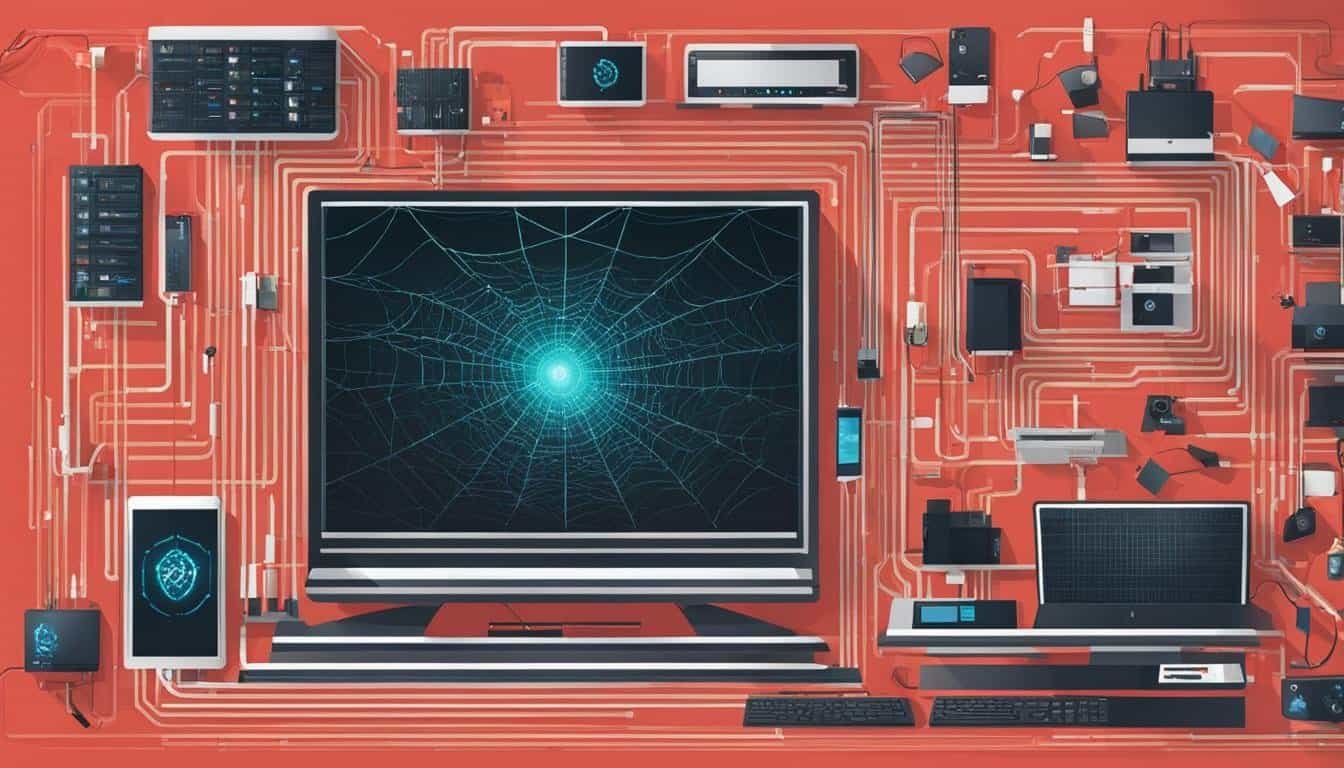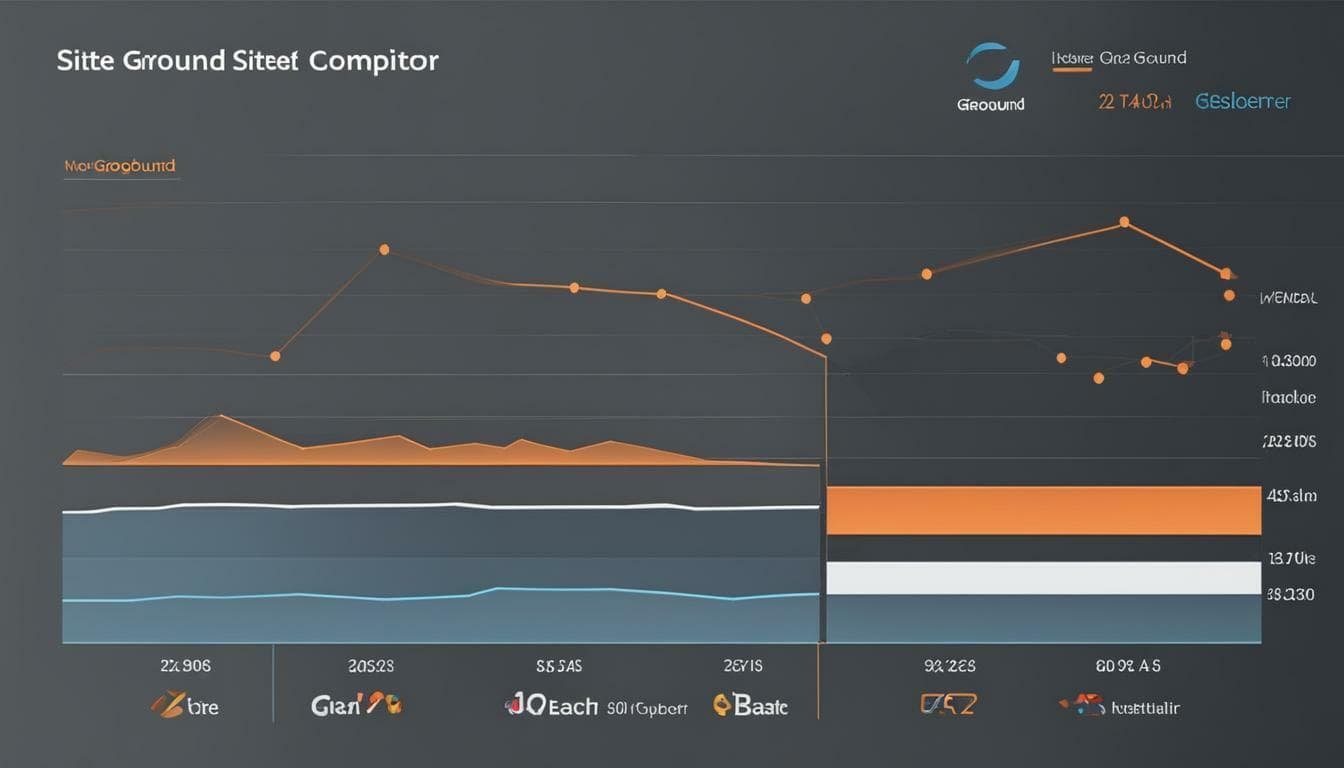As technology continues to advance, so do the threats that come with it. One of the most concerning threats in today’s digital landscape is hacking. But what exactly is hacking, and how does it work?
Hacking is the art of exploiting weaknesses in computer systems or networks to gain unauthorized access to data. It involves a complex process that requires a deep understanding of the mechanics and anatomy of hacking. By decoding the art of hacking, we can better comprehend the techniques employed by hackers to breach security barriers.
Key Takeaways:
- Hacking involves identifying and exploiting weaknesses in computer systems or networks.
- It encompasses various techniques such as social engineering, password hacking, malware infection, and more.
- Hackers are motivated by financial gain, espionage, hacktivism, and other factors.
- Understanding the different types of hackers and their motivations is crucial.
- Regular software updates, unique passwords, and avoiding suspicious links can help prevent hacking attacks.
Types of Hackers and Their Motivations
When it comes to hacking, there are various types of hackers, each with their own motivations and intentions. Understanding these different types can provide valuable insights into the complex world of hacking and cybersecurity.
Black Hat Hackers
Black hat hackers, also known as malicious hackers, are individuals who engage in hacking activities for personal gain or with malicious intent. Their motivations can range from financial gain to corporate espionage or even state-sponsored hacking. These hackers exploit vulnerabilities in systems and networks to carry out their malicious activities, often causing harm to individuals, organizations, or governments.
White Hat Hackers
In contrast to black hat hackers, white hat hackers, also known as ethical hackers or security experts, use their skills to improve security and identify vulnerabilities in systems. They work legally and ethically, often employed by organizations to test the vulnerability of their systems and networks. White hat hackers play a crucial role in helping organizations strengthen their security measures and protect against malicious attacks.
Grey Hat Hackers
Grey hat hackers fall somewhere between black hat and white hat hackers. They may carry out hacking activities without malicious intent but without permission or legal authorization. These hackers often disclose vulnerabilities they uncover to the affected organizations, sometimes with the expectation of receiving a reward or recognition. While their intentions may not be entirely malicious, their actions still violate ethical and legal standards.
Understanding the motivations behind hacking is equally important. Hackers can be motivated by financial gain, corporate espionage, political espionage, revenge, hacktivism, security improvements, or simply the desire for notoriety. By comprehending the different types of hackers and their motivations, individuals and organizations can better protect themselves against hacking attacks and take proactive measures to enhance their cybersecurity defenses.
| Hacker Type | Motivations |
|---|---|
| Black Hat Hackers | Financial gain, corporate espionage, reputation, state-sponsored hacking |
| White Hat Hackers | Improving security, identifying vulnerabilities ethically |
| Grey Hat Hackers | Violating standards without intending harm, disclosing vulnerabilities to gain rewards or recognition |
A Brief History of Hacking
Hacking has a fascinating history that traces back to the early days of computer technology. In the 1960s, hackers were regarded as highly skilled experts who aimed to customize and optimize computer systems. It was during this time that the concept of hacking began to take shape.
As technology progressed, the 1970s saw a significant expansion of hacking activities. One notable development was phreaking, which involved manipulating the electronic telephone switching network. This allowed hackers to make unauthorized phone calls and exploit vulnerabilities in the telephone system.
The advent of personal computers in the 1980s brought about a new era of hacking. With the rise of affordable computing devices, hackers were motivated by personal gain and the thrill of breaching security systems. The passage of the Federal Computer Fraud and Abuse Act in 1986 marked a turning point, as it criminalized unauthorized access to computer systems.
The 1990s witnessed a surge in cybercrimes and high-profile hacking incidents. This period saw the emergence of the first computer worm, which caused widespread disruption, and the first digital bank heist. Additionally, hacktivist groups began to gain prominence, using hacking techniques to further their political or ideological agendas.
Throughout the 2000s and into the 2010s, hacking continued to evolve rapidly alongside advancements in technology. Government agencies and large corporations became prime targets for sophisticated cybersecurity attacks. Hacktivist groups like Anonymous gained notoriety for their cyber activities, further highlighting the need for improved cybersecurity measures.
Overall, the history of hacking is an ever-evolving narrative that reflects the relentless pursuit of technological advancement and the constant battle to protect digital systems and networks from malicious actors.
Hacking Targets and Prevention Measures

When it comes to hacking, hackers target a wide range of devices and systems. From smart devices like smartphones and IoT devices to webcams, routers, and email accounts, no system is entirely safe from their reach. To safeguard against such attacks, it is essential to implement preventive measures and stay vigilant.
One common target for hackers is smart devices, which have become ubiquitous in our daily lives. These devices, such as smartphones and IoT gadgets, can be susceptible to vulnerabilities that hackers can exploit. Additionally, webcams have been targeted by hackers seeking to invade people’s privacy. They can gain unauthorized access to these devices, allowing them to spy on individuals, record videos, and even blackmail victims.
Routers are another prime target for hackers. By compromising routers, hackers can gain control over a network and intercept sensitive information. They can redirect users to malicious websites, monitor internet traffic, and even launch attacks on other devices connected to the network.
| Hacking Targets | Prevention Measures |
|---|---|
| Smart devices (Smartphones, IoT devices) | Regularly update the device’s software, use unique and strong passwords, and be cautious when downloading apps or granting permissions. |
| Webcams | Cover the webcam when not in use, disable remote access, and use strong passwords for webcam accounts. |
| Routers | Change default credentials, update router firmware, enable strong encryption (WPA2 or higher), and regularly monitor network activity. |
| Email accounts | Enable two-factor authentication, use unique passwords, be cautious when opening email attachments or clicking on suspicious links. |
| Jailbroken phones | Avoid jailbreaking devices, as it can expose them to potential security risks. |
Email accounts are another tempting target for hackers. By gaining access to email accounts, hackers can steal sensitive information, initiate phishing attacks, and even spread malware. Implementing two-factor authentication, using unique passwords, and being cautious when opening email attachments or clicking on suspicious links can help protect against email-related hacks.
Lastly, jailbroken phones, which have been modified to remove restrictions imposed by the device manufacturer, are also vulnerable to hacking. Jailbreaking can expose phones to security risks as it bypasses the device’s built-in security measures. Therefore, it is advisable to avoid jailbreaking devices to maintain their security integrity.
By taking preventive measures such as regularly updating software, using unique and strong passwords, enabling encryption, avoiding suspicious links and ads, and changing default credentials, individuals and organizations can greatly reduce the risk of falling victim to hacking attacks.
Summary:
Hackers target various devices and systems, including smart devices, webcams, routers, email accounts, and jailbroken phones. To protect against hacking, it is crucial to regularly update software, use unique passwords, enable encryption, avoid suspicious links and ads, and change default credentials. Implementing these prevention measures adds an extra layer of security and minimizes the risk of becoming a victim of hacking attacks.
Conclusion
In conclusion, understanding the hacking process is crucial in the ever-evolving field of cybersecurity. By exploring the anatomy of hacking, we can better protect ourselves and our data from malicious attacks.
Throughout this article, we have discussed the different types of hackers and their motivations, ranging from black hat hackers seeking financial gain to white hat hackers striving to improve security. We have also delved into the history of hacking, from its early days in the 1960s to the emergence of hacktivist groups in the 2010s.
Furthermore, we have highlighted common hacking targets and provided prevention measures to bolster security. Regular software updates, the use of unique passwords, and avoiding suspicious links and ads are just a few measures that can significantly reduce the risk of falling victim to hacking attacks.
By staying informed and implementing these security measures, we can navigate the intricate world of hacking with greater confidence. Understanding the hacking process and taking proactive steps to protect ourselves allows us to safeguard our data and privacy in an increasingly digital world.
What is the Process of Hacking According to Your Essential Guide?
The how hacking works guide offers a comprehensive understanding of the hacking process. It explains that hackers exploit vulnerabilities in computer systems and networks to gain unauthorized access. They analyze the target, gather information, and use various techniques like phishing, social engineering, or malware to breach security. Understanding this guide can help individuals protect themselves from potential cyber threats.
FAQ
How does hacking actually work?
Hacking involves identifying and exploiting weaknesses in computer systems or networks to gain unauthorized access to data. Hackers use various techniques, such as social engineering, password hacking, malware infection, exploiting insecure networks, gaining backdoor access, and more.
What are the different types of hackers and their motivations?
There are black hat hackers, who engage in hacking activities for malicious purposes like financial gain or corporate espionage. White hat hackers, on the other hand, use their skills to improve security and test vulnerabilities ethically. Grey hat hackers violate standards but without intending harm. Motivations can vary from financial gain, revenge, hacktivism, to security improvements and gaining notoriety.
Can you give a brief history of hacking?
Hacking has a rich history that began in the 1960s when hackers were known as technology experts seeking to optimize systems. It expanded in the 1970s with phone hacking or phreaking. The rise of personal computers in the 1980s led to increased hacking, followed by high-profile cybercrimes in the 1990s. The 2000s saw government agencies and corporations targeted, while the 2010s brought more sophisticated techniques and the emergence of hacktivist groups like Anonymous.
What are common hacking targets and how can I protect myself?
Hackers target a wide range of devices and systems, including smartphones, webcams, routers, email accounts, and jailbroken phones. To protect against hacking, it’s important to regularly update software, use unique passwords, ensure HTTPS encryption on websites, avoid suspicious links and ads, and change default credentials on routers and smart devices.
What’s the conclusion or summary of hacking?
Hacking is a complex and ever-evolving area of cybersecurity. Understanding how it works, the different types of hackers, their motivations, the history of hacking, common hacking targets, and prevention measures is crucial for individuals and organizations to protect themselves against hacking attacks.




0 Comments